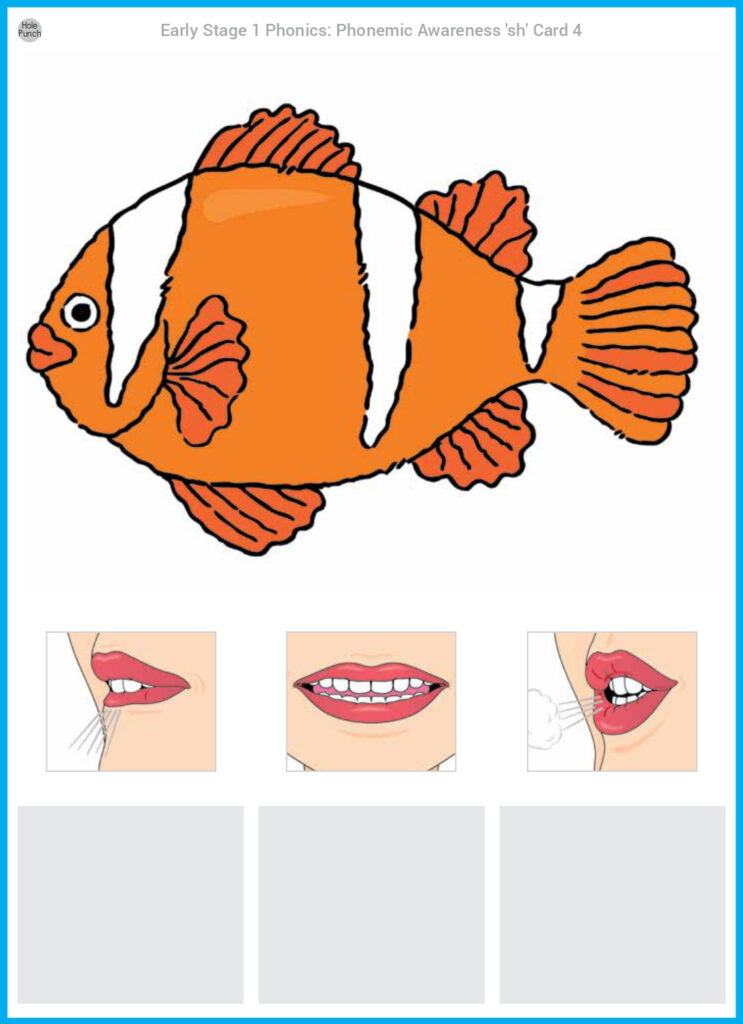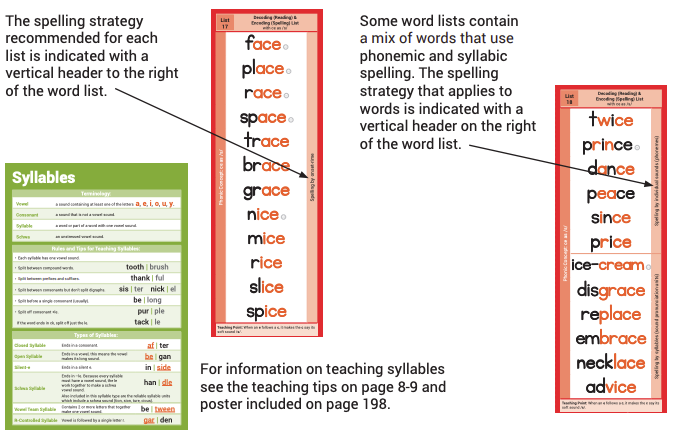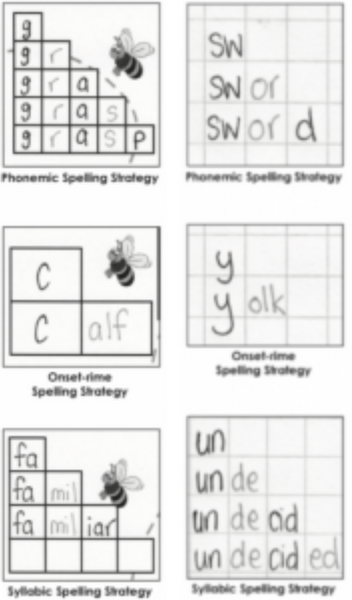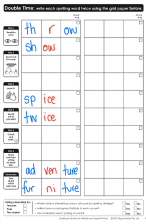What are Elkonin Boxes:
Elkonin boxes or sound boxes are a teaching tool used to represent each sound or phoneme contained in a word (Elkonin, 1963). A series of connected boxes are used to represent each sound (not the letters) in a word. For example, three boxes are placed under the word ‘fish’ to represent the three sounds /f/ /i/ /sh/.
Why Does PLD Recommend the Use of Elkonin Boxes:
Two critical skills are required for reading success, (1) phonemic awareness (the ability to identify and manipulate sounds in spoken words) and (2) knowledge of the alphabetic code (Phillips et al., 2008; National Reading Panel, 2000). Ross and Joseph’s (2019) literature review on the use of Elkonin boxes also demonstrates that this teaching tool improved phonemic awareness, letter-sound knowledge, and spelling skills in students who were provided with sound box based literacy instruction.

How Does PLD Incorporate Elkonin Boxes into the Program:
Elkonin boxes are used throughout PLD’s resource offerings to emphasise the connection between the phonemes in a word and their spelling representation.
In the Foundation/Prep Year sound boxes are first introduced within segmenting tasks. Examples of PLD’s resources utilising this tool can be found in the following books:
In Year 1 and 2 sound boxes are primarily used within the daily speech-to-print task. The teacher explicitly demonstrates how to complete the speech-to-print task by selecting a word or two from each of the word lists being taught to students. For example,

“We are learning to sound out as we spell and write”.
“First we decode the word in our word list by saying the sounds aloud- /p/ /ai/ /n/ /t/ and then blend the word together /paint/”
“Now we cover the word and write each sound (not each letter) in the boxes, switching colour pencils for each sound”.
“I am looking for your mouth to be moving as you write each sound”.
“This is because good spellers map speech sounds to spellings”.
For more information on this task please see page 7 of the Year 1&2 Teaching Sequence Manual

For more information on this task please see page 7 of the Year 1&2 Teaching Sequence Manual
Once students have progressed beyond spelling with individual phonemes (typically from mid Year 2 onwards or once students reach Stage 3 concepts) PLD utilises boxes for each syllable within multisyllabic words. Sounding out words in Stages 3-6 are still relevant, however reading and spelling words in larger sound units becomes the dominant strategy. Ehri (2005, p.175) explains that:
“As [student’s] become familiar with letter patterns that recur in different words, the grapheme–phoneme connections in these words become consolidated into larger units. These include spellings of rimes, syllables, morphemes, and whole words that have become unitised”.

Explicitly teaching students how to break down multisyllabic words so they can accurately spell these words is vital as the vast majority of words in English are multisyllabic (Baayen et al., 1995). Moreover, studies estimate that students in Year 3 and above encounter approximately 10,000-20,000 new words in print each year, with the majority of these being multisyllabic words (Kearns et al., 2016).
Examples of how to use Elkonin Boxes for multisyllabic words are provided below:

Syllabic Spelling Strategy with boxes from the Phonic and Sight Word Sequence book.

Sound Pyramid activities from PLD’s Spelling Activities for the Junior Primary and Spelling Activities for the Middle and Upper Primary.

Double or triple time activities from PLD’s Spelling Activities for the Junior Primary and Spelling Activities for the Middle and Upper Primary are also useful.
At PLD Elkonin boxes are one of our most strongly recommended tools when teaching phonemic segmentation and spelling. Why? Because they are simple but effective in drawing children’s attention to the sounds in words while subsequently mapping spelling patterns.
At PLD we are always available to help you achieve the best possible literacy outcomes for your students. If you have any questions about PLD’s Elkonin box resources or anything else we do here at PLD get in touch with us through our chat icon in the bottom right of the screen or send an email to mail@pld-literacy.org.
Reference List
Baayen, R. H., Piepenbrock, R., & Gulikers, L. (1995). The CELEX lexical database. Philadelphia: University of Pennsylvania. Linguistic Data Consortium. Online: https://catalog.ldc.upenn.edu/ldc96l14
Ehri, L. C. (2005). Learning to read words: Theory, findings, and issues. Scientific Studies of reading, 9(2), 167-188.
Elkonin, D. B. (1963). The psychology of mastery elements of reading. In B. Simon & J. Simon (Eds.), Educational psychology in the USSR (pp. 167). London, UK: Routledge & Kegan Paul.
Kearns, D. M., Steacy, L. M., Compton, D. L., Gilbert, J. K., Goodwin, A. P., Cho, E., . . . Collins, A. A. (2016). Modeling polymorphemic word recognition exploring differences among children with early-emerging and late-emerging word reading difficulty. Journal of learning disabilities, 49(4), 368–394. https://doi.org/ 10.1177/0022219414554229
National Reading Panel (NRP). (2000). Report of the National Reading Panel. Teaching children to read: An evidence-based assessment of the scientific research literature on reading and its implications for reading instruction. Washington, DC: U.S. Department of Health and Human Services.
Phillips, B. M., Clancy-Menchetti, J., & Lonigan, C. J. (2008). Successful phonological awareness instruction with preschool children: Lessons from the classroom. Topics in early childhood special education, 28(1), 3-17.
Ross, K. M., & Joseph, L. M. (2019). Effects of word boxes on improving students’ basic literacy skills: A literature review. Preventing School Failure: Alternative Education for Children and Youth, 63(1), 43-51.



 print
print



